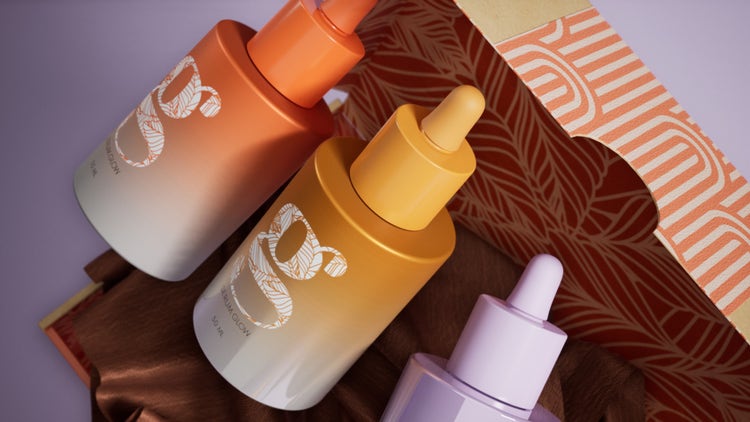https://main--cc--adobecom.hlx.page/creativecloud/img/icons/3d-assets.svg | 3D Assets
Feb. 03, 2021, by Anais Lamelliere and Nicolas Paulhac
Parametric Monotype: From Illustrator to Substance, in Beauty Packaging Design
The Substance Source team explores the potential of using 3D tools to complement 2D workflows, when designing high-quality packaging products.
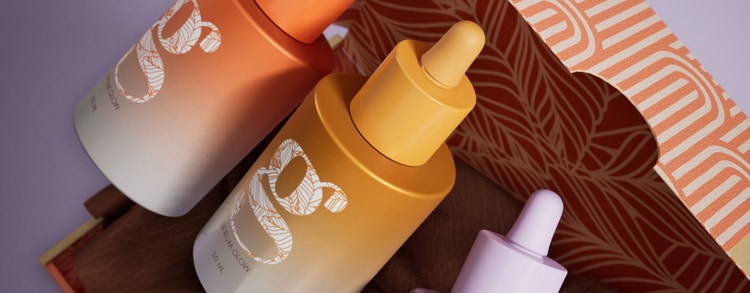
Showcasing power of Substance toolset in the design of beauty packaging
The Substance 3D Assets team is insatiably curious, forever peering into new sectors, and discovering new areas of professional activity. We’ve previously delved into the worlds of sportswear, procedural fashion, and product design. But for a while now that curiosity has been rising up, a faint itch in search of being scratched.
And so our curious delving-about begins again. This time around, we’re looking into the design of beauty packaging. This is a sector which is increasingly using digital tools, and so has changing needs: it has a growing requirement for photorealistic images and digital libraries of materials; these in turn facilitate the creation of communication visuals, and can prove more cost-effective than ‘classic’ photo shoots. This increasing use of digital tools also grants us the possibility to showcase the power of the Substance toolset, as applied to the visualization of packaging goods.
How 3D tools can complement 2D designs
Digital tools have for some time been a major part of the product design process. 2D graphic design tools, such as Adobe’s own Illustrator, are of course established tools to facilitate the creation of packaging. Here, however, we’ll examine how 3D tools can complement 2D designs, facilitating workflows and boosting efficiency when developing an entire range of products – for designers, marketing teams, retailers, and even engineers.
Authenticity is always key when researching a new sector of activity, and how 3D tools might be applied in that sector. It isn’t sufficient simply to study that sector – the Source team needs to get its hands figuratively dirty; that is, it needs to follow reproduce those processes, in order to identify the advantages that a 3D-based approach offers.
Creating our own unique range of beauty packaging
And so, for this investigation into the realm of beauty packaging, the team created its own unique range of beauty packaging. The thesis: 3D tools can complement 2D designs, in that texturing and digital visualization provide enormous potential for efficient development and iteration around a complete lineup of packaging. Like this, a designer of a visual lineup can share creations with a 3D artist directly, greatly facilitating the creation of visuals for an e-commerce or retail platform.
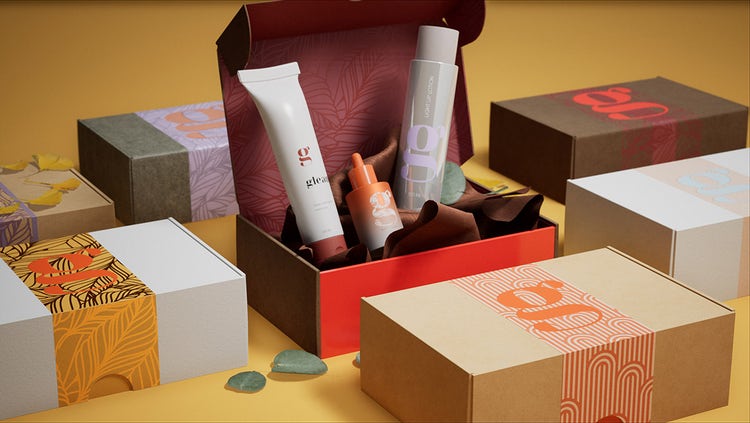
Other motivators of this project
An exploration of improved efficacy was not the only motivator of this project, however. More and more, we are all forced to question the sustainability of our own habits, and the ethics of the way we act as consumers – and manufacturers too must increasingly confront these questions. And so another driving force behind this project was a need to prioritize sustainable manufacturing practices. Could we act in a more environmentally conscious way in terms of how we approach the design process itself? And could we incorporate materials that would emphasize this conscientious approach if such packaging designs were to theoretically enter mass production?
In order to effectively showcase our packaging design, of course, we would need to present that design artfully. The Substance 3D Assets team had previously worked with 3D artist Ronan Mahon to create the short films mentioned above; now Anais Lamelliere and Nicolas Paulhac approached Ronan once more to create a film to highlight the remarkable quality attainable when approaching packaging design with a mix of 2D and 3D approaches.
Designing the Packaging Lineup
Anais: As mentioned, the story at the heart of the new film is the desire to defend a more balanced, sustainable approach to design. The past 12 months have been an unprecedented interlude; the need to exclude ourselves from everyday norms has in many cases given rise to a return to conscientiousness. We are increasingly re-evaluating how products are made, how to produce them, and the true extent of their environmental impact.
This short film highlights the beauty and sensory aspects of the botanical world, inspired by sculpted textured paper, dried flowers and cosmetic presentation boxes.
In pursuit of this basic, sustainable global aesthetic, the focus becomes simplicity – simple packaging with simple shapes adorned with a simple texture. The challenge is to choose raw and recycled materials, which require very little in terms of manufacturing processes.
I selected the material ‘substrates’ from Substance 3D Assets, and designed the color and finish palette in Substance Alchemist. Matte and monochromatic materials, textured surfaces on paper, and botanical inclusions all present vast possibilities for experimentation thanks to the Substance 3D Assets material library. We can, for instance, highlight the beauty of the material by playing on the subtly tactile nature of the medium – such as grained paper, here.
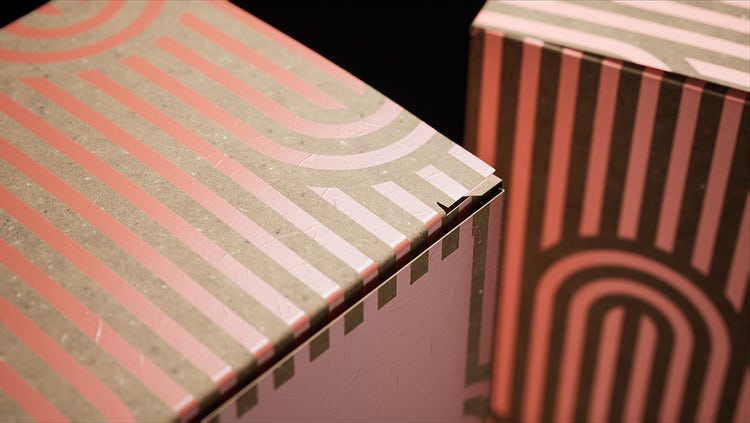
Substance 3D Assets materials reproduce tactile textures; we can therefore visualize materials that are natural and sustainable, accurately reproducing each fiber that such materials possess. To these natural, sustainable papers I applied curves and rounded shapes; such reassuring forms are evocative of the softness and calm of nature.
The decorative patterns involved in packaging designs are powerful design visuals. Using Adobe Illustrator, these patterns can be created digitally very rapidly. Here, I initially required some vector shapes to create the tileable rounded pinstripe and leaves pattern; with these in place I now have the basic repeating unit of the pattern.
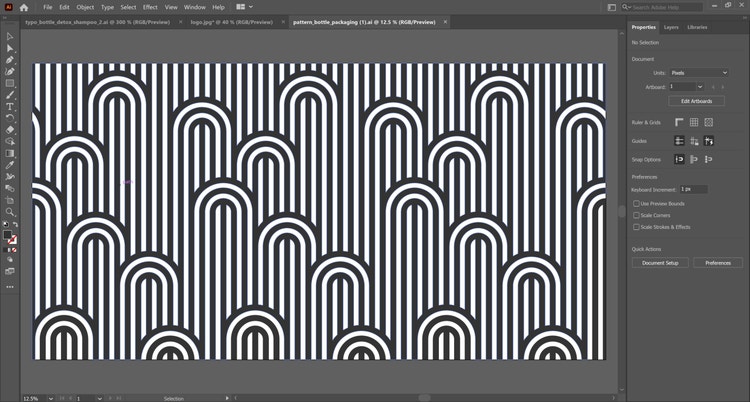
This established, I shared the pattern with Ronan, our artist, to use it in Painter as a mask, stroking to various thickness , and using blur and gradient filters on this mask.
Ronan could make variations extremely rapidly using this pattern in the various Substance Painter tools, and we were soon able to select a final design.
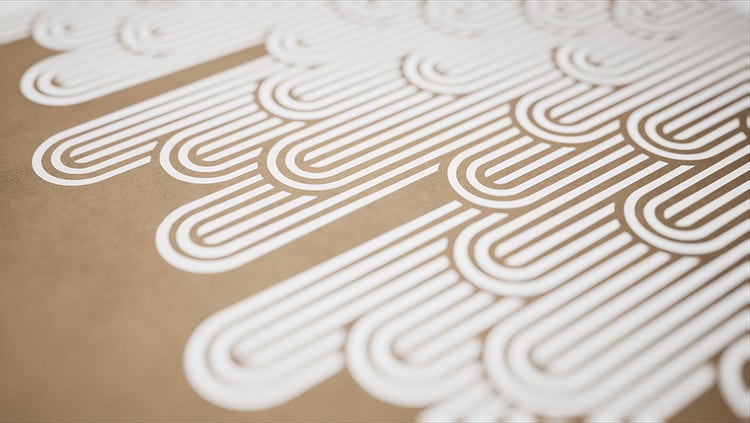
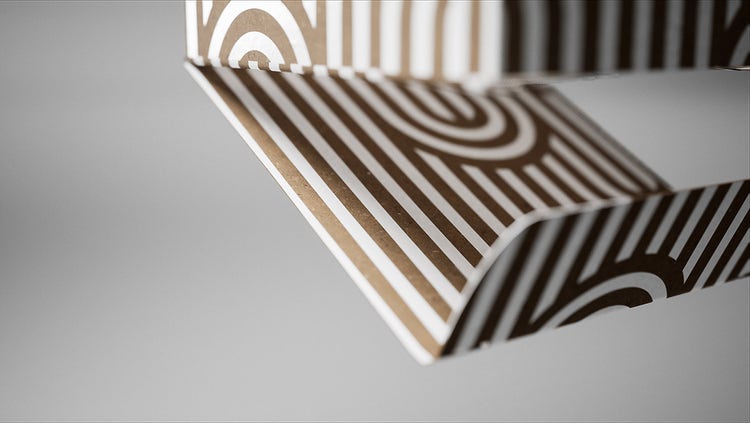
Defining a Style Guide
The next step concerns how to create a visual style guide for the packaging collection. One of the most essential documents any packaging can have is a design style guide. This is vital to ensure design consistency throughout any related products you create – no matter who designs it.
A style guide therefore contains all the necessary information to create design visuals as needed – logos, typography, layout rules, labels, taglines, imagery, patterns, and so forth, as well as all specific colors used.
Logo
The logo is an incredibly important element of the packaging design. This is the essence of the packaging project. In this instance, behind the logo of the packaging, the thematic idea is to focus on an ode to botanical grace; the typography therefore mixes bold calligraphy with suppleness.
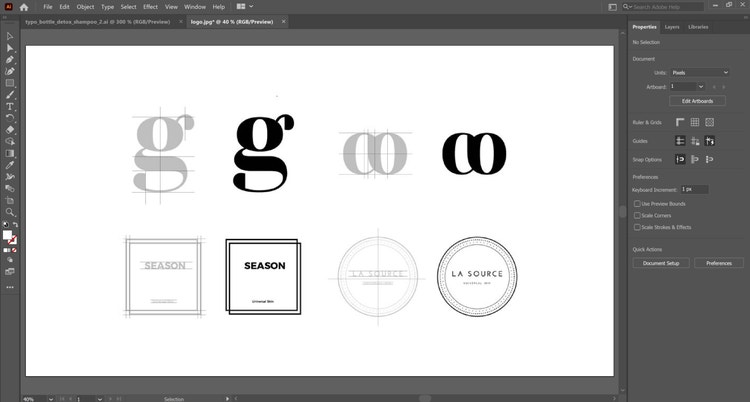
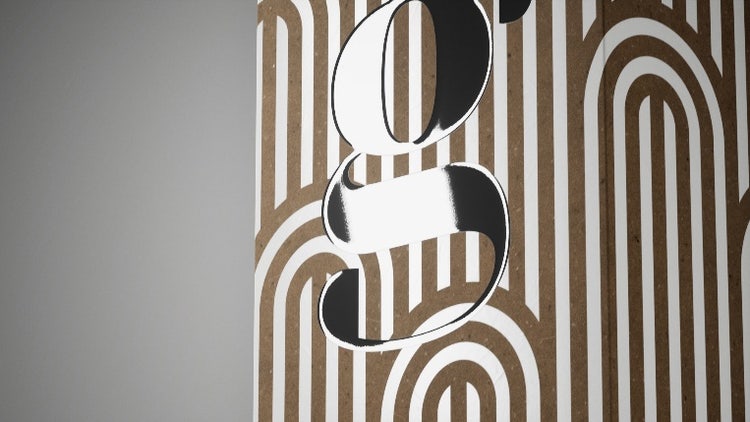
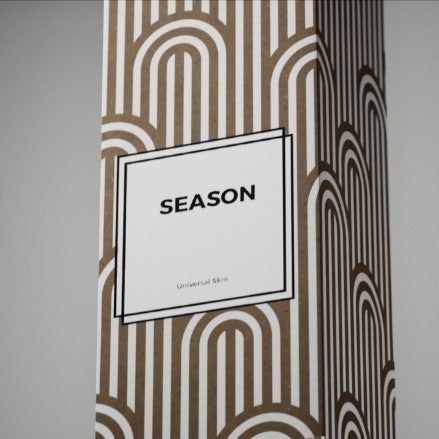
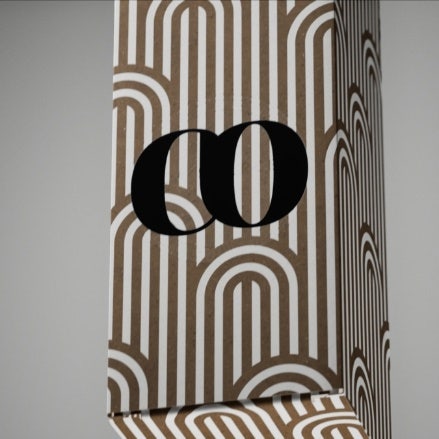
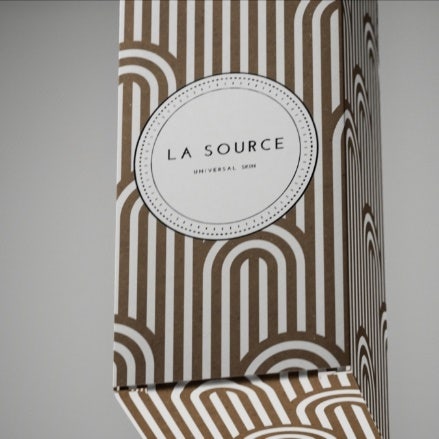
Exporting text through Substance Designer into Substance Painter
Ronan: I applied the logos and large ‘g’ by exporting the chosen text through Substance Designer into Substance Painter as a text material.
However, for the large bodies of text with smaller icons, such as the recycling logo, I ultimately laid these out in Photoshop. I made a mask for the bodies of text, then anchored this at the bottom of the stack to drive the text treatments for all product variations. In this way, I could use the same black and white mask from Photoshop to bevel, or round, or deboss the text using blurs and gradient filters in Substance Painter.
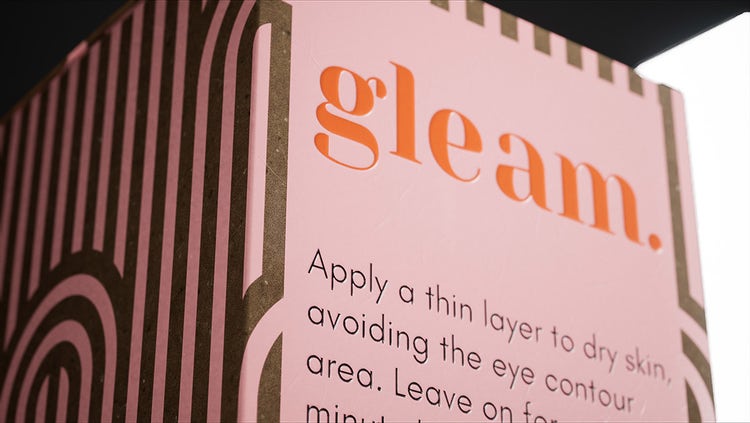
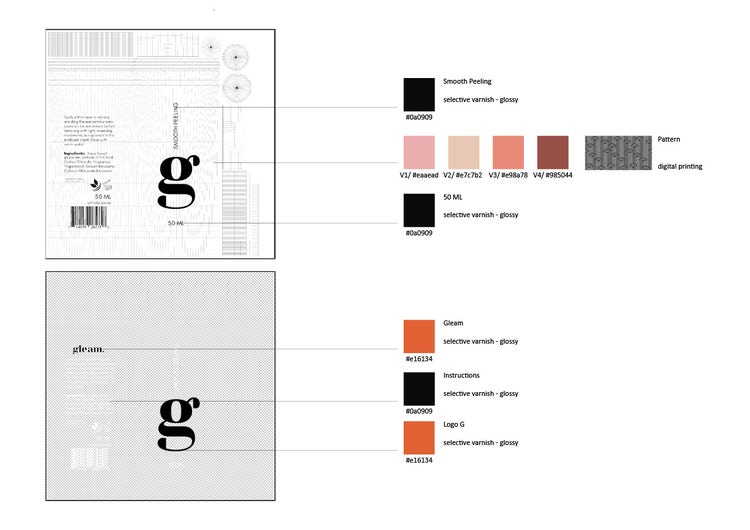
Descriptive product text on the back
For the descriptive product text on the back the logo would often have color and a raised profile, while the body text might have a satin finish. I could differentiate between these two surface treatments using just one mask in Photoshop. Black was used for the logo, white for the text body and they both sat on a transparent background. In Painter, once this .psd was imported I could selectively mask based on these colors and give the logo or the body the surface treatment it needed. Whenever an adjustment was needed to the text, I would make the change in Photoshop, reload the mask using the Resource Updater in Substance Painter and the update would propagate instantly to all of the 4 or 5 product variations.
Bill of material
Anais: Establishing a bill of material enabled us to define brand and design language guidelines on the go and with total flexibility. In addition, Substance Painter allowed us to rapidly position, scale, and design the finish of icons and logos on the product. Moreover, it gave us the creative freedom to test, modify and replace all these details in real time.
The botanical imagery of the design is enriched with pastel colors and refined compositions.
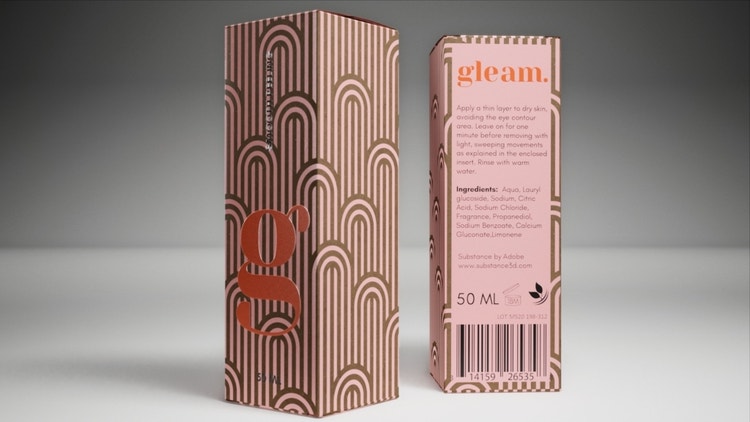
I used 2D digital tools such as Illustrator to guide the visual elements which constitute the packaging. This allowed me to guide Ronan in the realization and implementation of the visual style guide for the packaging lineup.
Using this style guide, the surface finish and color of materials were applied to each product. Note however that this process applies to 2D design specifically; when designed in 3D, the palette of materials becomes a matrix of infinite possibilities and combinations of the elements mentioned above.
Packaging Visualization
Designing color and finishes at the product and packaging range level is remarkably simple, as every validated variation is saved as a preset in a single digital material. It’s even easier to design a visual bill of materials that can be shared with this same efficiency between design and engineering departments. The outcome of every test is stored, and there is no need to recreate something several times in several formats; the information is transmitted unimpeded from the designer to the client.
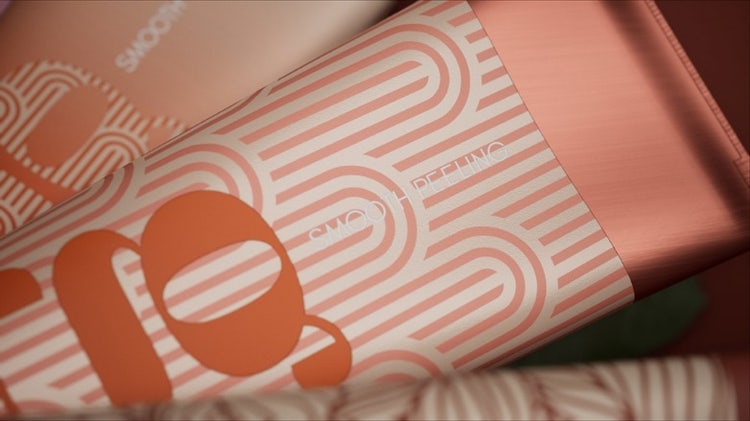
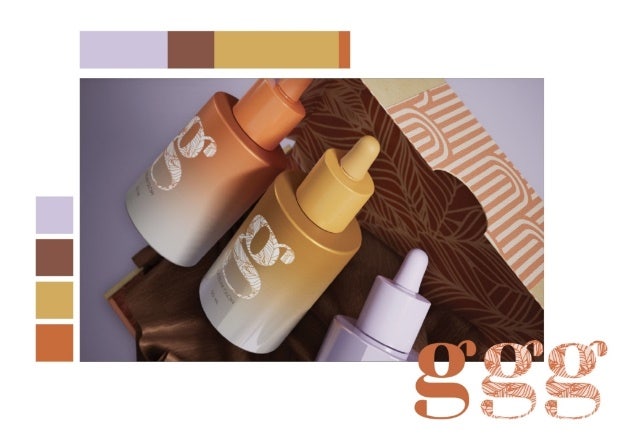
Color palette
For the color palette, vegetal greens and natural earth tones adorned with floral accents pay tribute to the spring season. A palette of pleasant colors, ranging from creamy white to floral tones, is combined with soft shapes.
Ronan: When Anais and Nicolas shared their vision for Parametric Monotype with me, I understood the sensitivity that would be needed to achieve the quality they required. I don’t have a background in product design like they do, and I’m always fascinated by the detail and attention they go into when they describe real-world processes like hot stamping of text or metallic paint finishing.
With their expert knowledge and Anais’ materials to hand I quickly started by making all of the product variants needed in Substance Painter. I was able to structure my files so that a simple mask structure underpinned the file in Painter, while all the parametric materials used in variants were quickly positioned by referencing that base masking. Any changes we needed, such as adjusting pattern or position of elements, could be made in one place in Painter and all of the product variants would adjust themselves as a result.
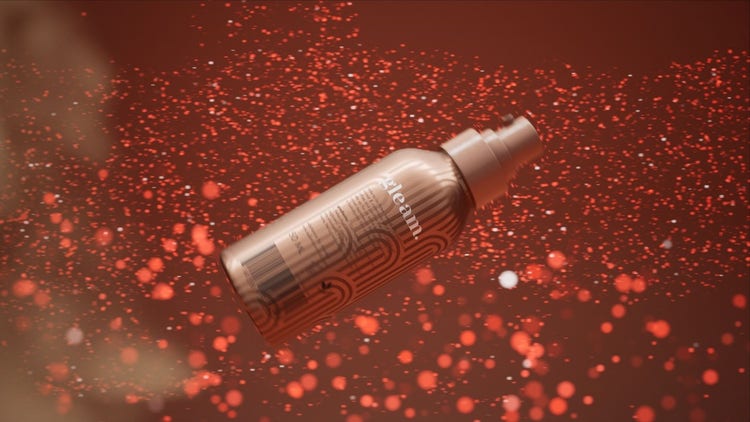
This made the feedback process quite fluid. Even though we live in different countries, I remember doing some of the adjustments live with them over chat. In fact, the process was sufficiently fast for me to share a new draft of the video showing their requested changes to the products within about fifteen minutes of them requesting it. On that occasion the changes required adjusting eight of the products in Painter, exporting, and importing to Unreal Engine 4 for real-time rendering, encoding video and even the upload time of the video so that we could chat about it, all on my not-so-nimble countryside broadband!
Once we had the collection in place in 3D and applied all the feedback, it wasn’t difficult to make the collection shine in the real-time video. Each product had lots of personality and interesting forms for me to observe. The complex interaction between the parametric materials on the surfaces combined with real-time raytraced reflections of the scene gave me lots of opportunities to capture exciting moments.
Organic elements like the leaves and flowers are usually quite time-consuming in 3D, but using the Substance Source atlas materials on masked transparent planes made them a breeze.
I created fun little animations like the folding paper, sparkling glitter, and popping boxes to reflect the life and color shown in the style guide that Anais and Nicolas had prepared.
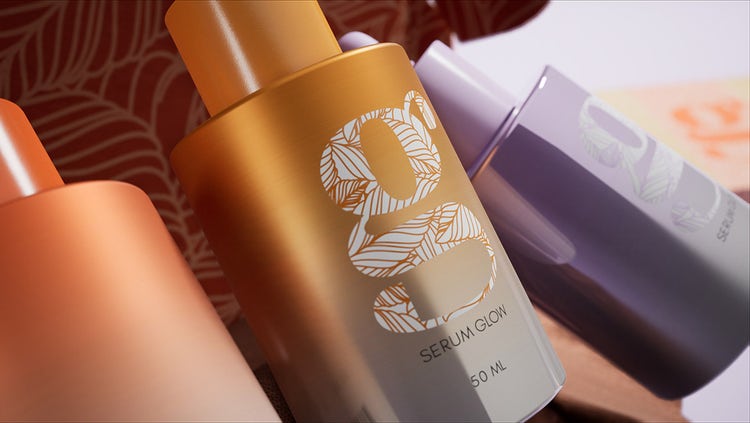
Anais: The 3D reproduction of the metallic gradient is based on the impression technique of metallization. This is a printing solution that involves completely covering a glass, plastic or metal article with a colored metallic layer. The result is a mirror-like surface, which is absolutely non-reproducible with other printing solutions.
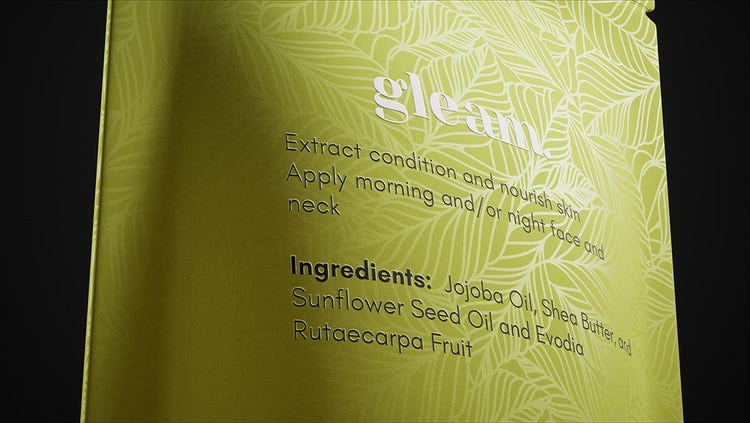
Here, we’ve reproduced the shiny effect of selective varnish. This printing process takes place after the matte lamination of a document. It consists of depositing shiny varnish on specific areas of the document.
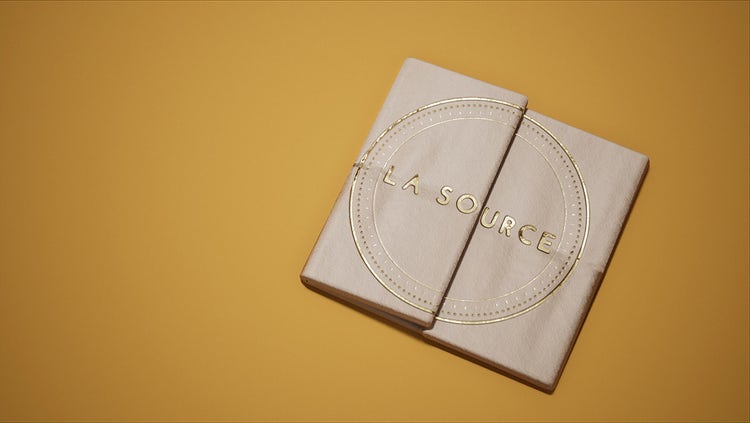
The elegance of gold leaf, and textured effects such as dry paper or petals, as well as brightness and intense metallic finishings, become the essential ingredients for a sensorial botanic ambiance. Hot stamping denotes the transfer of a colored and metallic film (gold, silver, color gradient) onto a chosen material.
Conventionally, to perform hot stamping, it is first necessary to create a mold; this will transpose the chosen pattern onto the support. After this, we affix the metallized tape between this matrix and this support, then exert strong pressure. This pressure is accompanied by a heat process that will allow the pattern to quickly seep into the material. Here, Ronan has used Substance Painter to reproduce this effect in 3D.
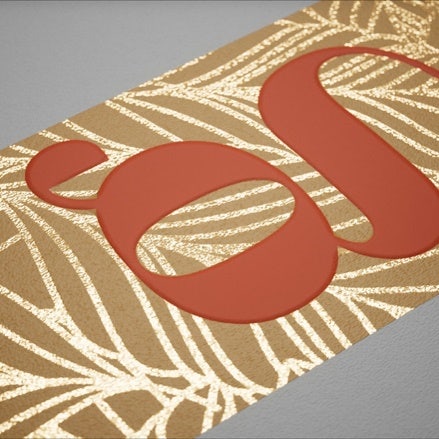
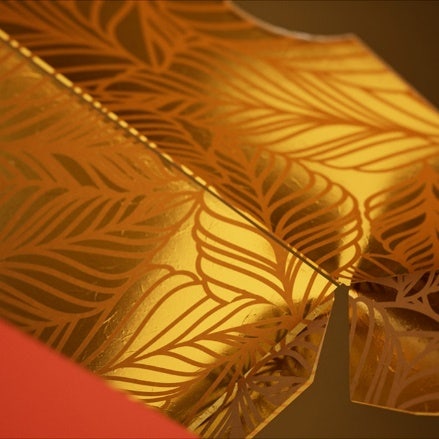
My workflow
This process enabled us to design the products and packaging in 3D, finalize material specifications, texture the models, and produce the videos in a very short time.
Using the Substance toolset, we were able to test out a much simpler workflow. Like this, we avoided the endless iterative loops of real-scale printouts of the product line-work that would have been required to verify and validate the position of the logos and details on a single piece of packaging.
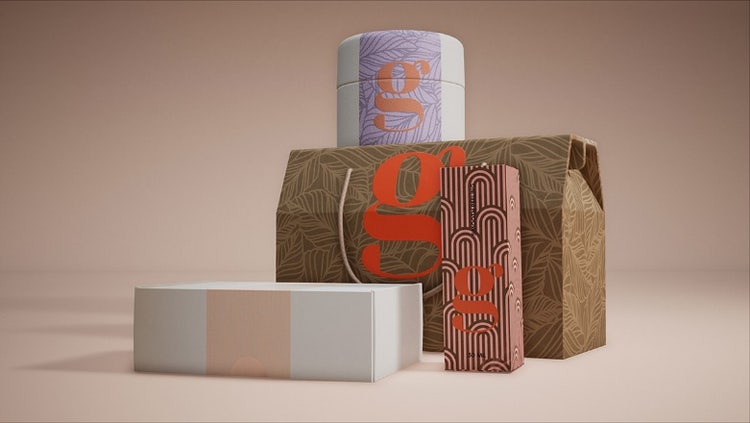
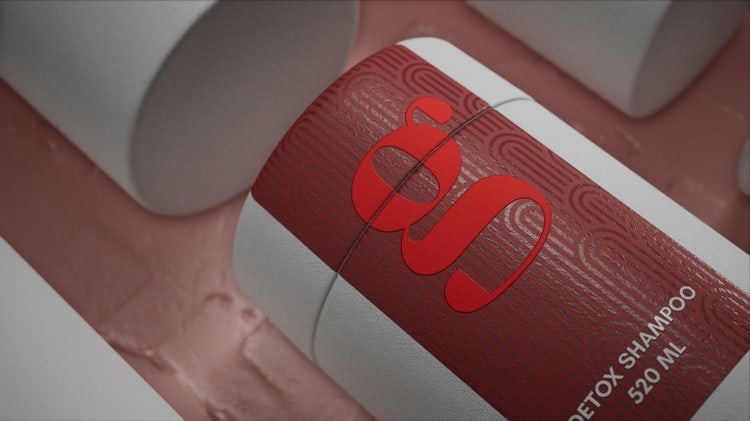
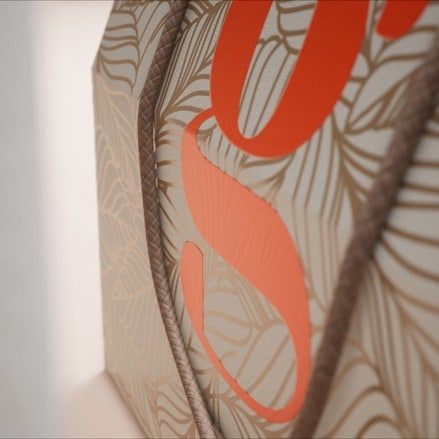
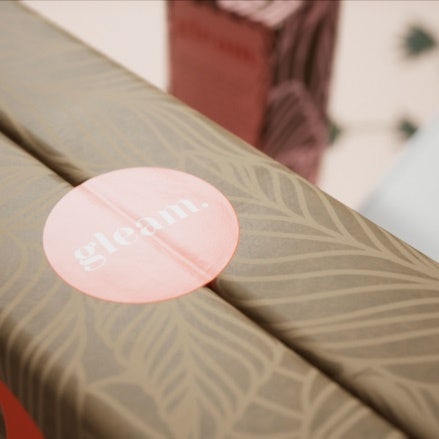
Examining materials from the point of view of a CMF designer, we reproduced the conditions of a complete design project, where designers need to create a lineup of packaging rapidly, while maintaining a high level of quality and detail.
As with any design project, design teams need to visualize concepts with various levels of refinement in order to make critical decisions, and to test the qualities of the design proposition in terms of the choice of material, patterns, colors, and finishes throughout the development of a packaging collection.
Outcomes
As initially mentioned, considerations for this particular packaging design are rooted in a collective return to ethical conscientiousness that we are currently experiencing, which is pushing us to re-evaluate how products are made, how to manufacture them, and the true extent of their environmental impact.
Additionally, from a viewpoint of greater efficiency, texturing and digital visualization provide enormous potential for development and iteration around a complete lineup of packaging.
The key outcomes that we’ve discovered in developing this product range, and short film, support these initial ideas that motivated this projects: using a comprehensive library of parametric materials, such a design exercise demands only a small investment in terms of time and money, while maintaining a level of quality that is comparable with more conventional methods. Using 3D tools – such as the Substance toolset – for packaging design, the potential cost benefits are real and significant.
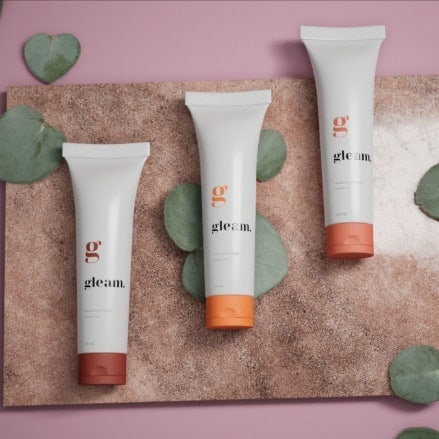
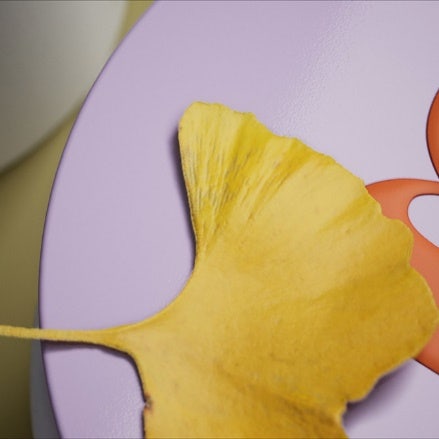
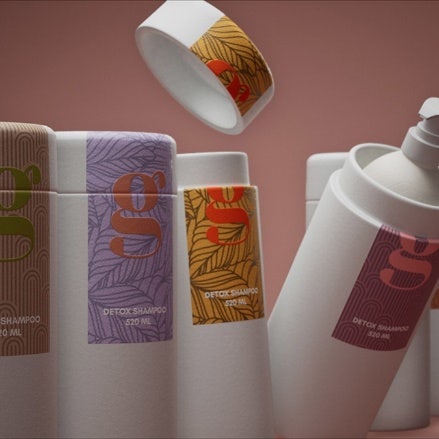
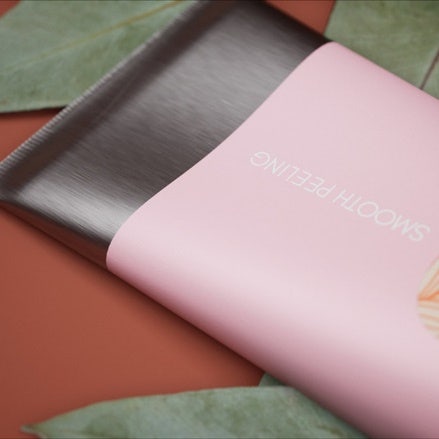
As seen in this project, the suppleness and understatement of natural materials – natural cardboard, along with leaves and petals – can be combined with ethical and sustainable production and retail processes. The resources required for this design approach are low, in terms of both time and money. Furthermore, 3D visualization of designs grants the flexibility to refresh displays, images, and layouts more frequently than might otherwise be the case.
The Packaging Materials Collection is available now on Substance 3D Assets.
